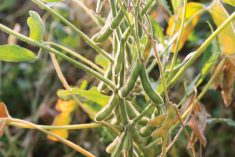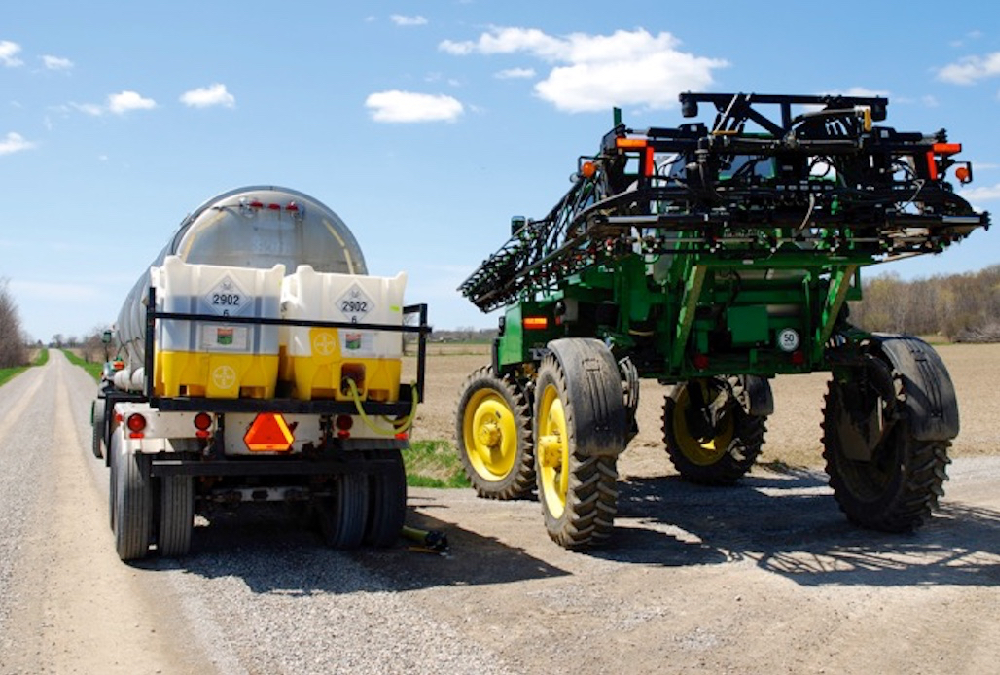Mani toba potato growers are accustomed to monitoring the wind and weather during the growing season, wondering if this is the week late blight will make its appearance.
The annual rite of summer happens because Manitoba has long been an anomoly.
While other growing regions have mild winters where living potato tissue can harbour the disease, our harsh winters have wiped it out, requiring a new infestation to be blown in every spring. When or if it emerges every growing season has been a complicated calculus of weather conditions, disease emergence to the south and prevailing winds. Some years it shows up early; other years it’s delayed, and some years, it doesn’t show up at all.
Read Also

How much nitrogen can farmers really cut?
Manitoba fertilizer trials look for nitrification inhibitor sweet spot, to lower greenhouse gas emissions and cost without hurting yield.
Growers have also benefited from the nature of the late blight populations that have surfaced. They’re divided into two major mating types, A1 and A2. When just one type is present, the diseases reproduce asexually. When both are present they can mate and reproduce sexually. But in Manitoba fields its been one or the other, never both.
It might seem like a minor point, but that’s been a major plus for Manitoba potato growers, according to one late blight expert.
Rick Peters, a research scientist with Agriculture and Agri-Food Canada on Prince Edward Island, says the lack of both parental types has acted like a big reset button every winter.
“You don’t have the disease overwintering here,” Peters said in an interview.
Were the two main late blight races able to mate, they could produce a new body that’s known by the unlikely name of oospore. They’re small reproductive bodies with thick cell walls and more tolerance to cold that can survive in the soil. While there is no direct evidence that they allow the disease to overwinter, researchers are strongly suspicious they do, which would make life just a bit harder for Manitoba growers.
“If these two races did mate and produce oospores, it would make overwintering more likely,” Peters said. “That would put Manitoba growers in a situation similar to that of growers in the East, where our predominant source of inoculum is from cull potatoes that haven’t been properly disposed of. The disease could emerge every spring if conditions were right.”
Nobody is entirely certain why the Canadian Prairies haven’t had both A1 and A2 strains present to mate. A2 is currently present in the U.S. including areas like Idaho and Washington state, and has hit Eastern Canada with a bang, Peters said. It was even present here, but has again been replaced by the A1 strains.
“A2 has become our predominant late blight in the East,” Peters said.
Gary Secor, a potato pathologist from North Dakota State University, says it’s sheer luck that we have never had both A1 and A2 strains in the region at the same time.
“We had A1 prior to 1995, then from 1995-2009 we had A2, then we had A2 in 2010,” he said.
While he stresses that no one has all the answers to why late blight moves, spreads and survives, he strongly suspects that the region’s harsh winters play a role. He also says that could be why there’s no evidence that the two have mated. He thinks the region’s deep frosts are too challenging even for the hardier oospore.
“Within our region – the northern U.S. and southern Canada – I think our winters are simply too brutal for good oospore survival,” he said. “We know the Europeans have lots of them, as do the Mexicans. They could even be here already – nobody knows for sure.”
And while that level of uncertainty is interesting to a plant pathologist like Secor, he stressed that it is really just of academic interest. From a grower’s perspective the real questions – like how to protect a promising-looking potato crop from possible infection – won’t change much. He’s still urging growers to be ready with a vigorous spray program.
“Regardless the source, we think there’s going to be inoculum present,” he said. “They need to be ready to spray and to be prepared to spray early and often.”
Getting on the job early is vital because existing crop protection products can only limit infections, not treat an infection once it’s already established in the growers’ fields.
———
“Theyneedtobe readytospray andtosprayearly andoften.”
– GARY SECOR














